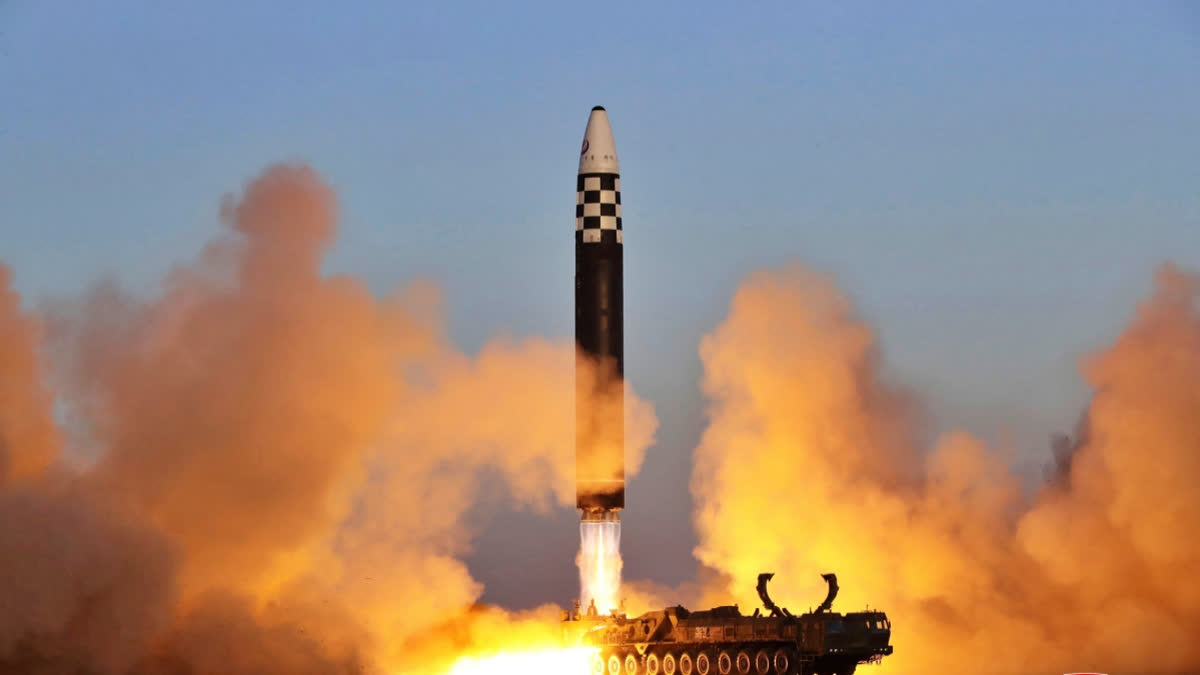Seoul (South Korea): North Korea launched two short-range ballistic missiles toward the sea on Wednesday night, its neighbours said, hours after the U.S. flew long-range bombers for drills with its allies in a show of force against the North. The launches, the latest in the North's barrage of weapons tests since last year, came amid ongoing annual U.S.-South Korean military exercises that North Korea regards as a rehearsal for invasion.
There were no reports of damages caused by Wednesday's launches. But observers say North Korea likely aimed to demonstrate again it has missiles capable of striking key targets in South Korea in protest at its rivals' military exercises. South Korea's Joint Chiefs of Staff said in a statement that the North Korean missiles both travelled about 360 kilometres (225 miles) before landing in the waters of the Korean Peninsula's east coast. It said the missiles were launched from the North's capital region.
The Joint Chiefs of Staff called the launches "a grave provocation" that threatens international peace and violates U.N. Security Council resolutions that ban any ballistic launches by North Korea. It said the South Korean and U.S. intelligence authorities were analyzing more details. Japan's Defense Ministry said it also detected the launches. It said the missiles travelled a distance of 400 kilometres (250 miles) at a maximum altitude of 50 kilometres (30 miles) before falling outside Japan's exclusive economic zone.
Earlier Wednesday, the United States flew at least one B-1B bomber for a joint aerial training exercise with other South Korean and U.S. warplanes, according to South Korea's Defense Ministry. It said the drills off the Korean Peninsula's west coast demonstrated the two countries' combined defence posture and the U.S. commitment to the defence of South Korea.
Japan's Defense Ministry said that Japan and the U.S. also conducted a joint aerial exercise involving two U.S. B-1Bs on Wednesday over the waters between Japan and the Korean Peninsula. It said the exercise was meant to show the two countries' resolve to respond to any emergencies promptly and confirm their response capabilities.
North Korea is extremely sensitive to the deployment of U.S. B-1B bombers, which are capable of carrying a large payload of conventional weapons. Wednesday's B-1B deployment is the 10th flyover by U.S. bombers on the Korean Peninsula this year, according to South Korea's Defense Ministry.
